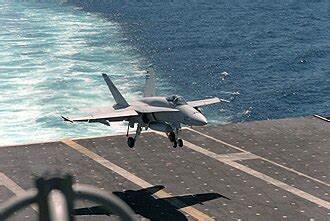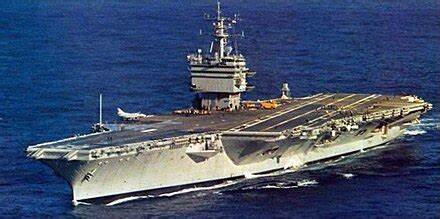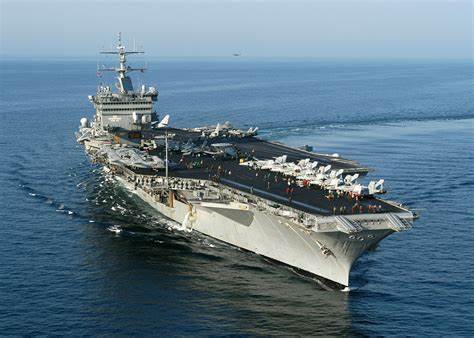
The future of the United States Navy’s formidable aircraft carriers, once the unchallenged queens of the seas, now hangs in the balance as strategic realities shift and costs rise.

These nuclear-powered behemoths, the backbone of American naval power for over half a century, face an uncertain destiny, compounded by the challenges posed by anti-access/area denial (A2/AD) systems and burgeoning military technologies.

The Navy’s current fleet consists of eleven nuclear-powered aircraft carriers.

The USS Enterprise (CVN-65) having been the first of its kind, launched in 1965.

However, the maintenance and upgrade costs of these carriers are soaring, with the latest Gerald R. Ford-class carriers like the USS Gerald R. Ford setting taxpayers back approximately $13 billion each.

And that’s just the cost for the ship itself. Equipping it with aircraft, ammunition, and supplies requires an additional substantial amount of money.

Aircraft carriers have evolved since their inception, transitioning from “eyes of the fleet” to formidable capital ships capable of projecting power across vast distances.

Yet, their future viability is in question. A2/AD severely limits the U.S. Navy’s ability to project power using aircraft carriers.

The A2/AD systems have the capability to overpower the defenses that safeguard the majority of U.S. aircraft carriers, resulting in either their sinking or sustaining irreparable damage that would render them ineffective in combat.

In response, some advocate for a transition toward unmanned underwater vehicles (UUVs), submarines, and long-range systems like hypersonic weapons, rather than continuing to build expensive supercarriers.

The U.S. Navy, meanwhile, has begun to confront the reality of decommissioning some of its most storied ships. The USS Nimitz (CVN-68), commissioned in 1975, will be decommissioned in 2026 following a service life extension.

Its decommissioning will closely follow that of the USS Enterprise (CVN-65), which has been undergoing deactivation since 2012.

The fate of these titans of the seas echoes that of their predecessors, with previous classes of carriers like the Essex and Midway finding varied ends—from scrapping to transformation into museums.

This looming transition underscores the Navy’s need to reassess its force structure in light of emerging threats and operational requirements.

The USS Jackson (LCS-6) and USS Montgomery (LCS-8), two Independence-class Littoral Combat Ships, for instance, have been slated for foreign military sales.
Relevant articles:
– U.S. Navy Aircraft Carriers are Destined for Retirement (Or Being Sunk), The National Interest
– The Aircraft Carrier Faces An Uncertain Future, nationalinterest.org
– Sunk, Scrapped or Saved: The Fate of America’s Aircraft Carriers, USNI News
– Navy to Decommission 2 Carriers in a Row, 2 LCS Set for Foreign Sales, Says Long Range Shipbuilding Plan, USNI News

